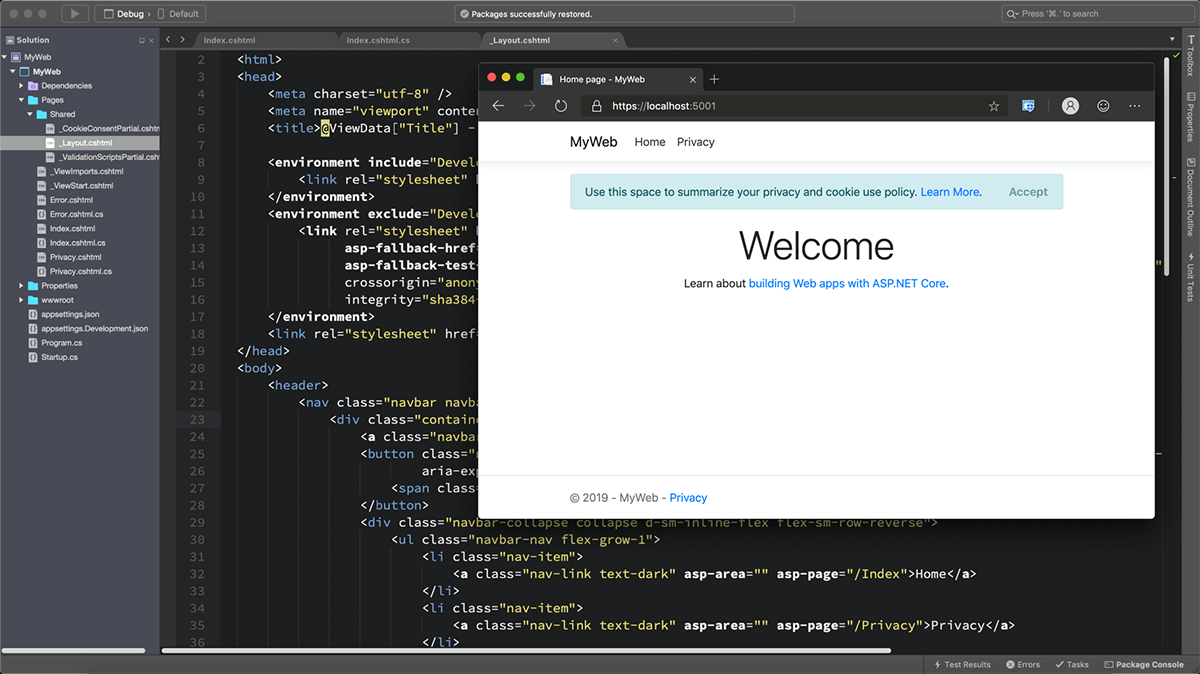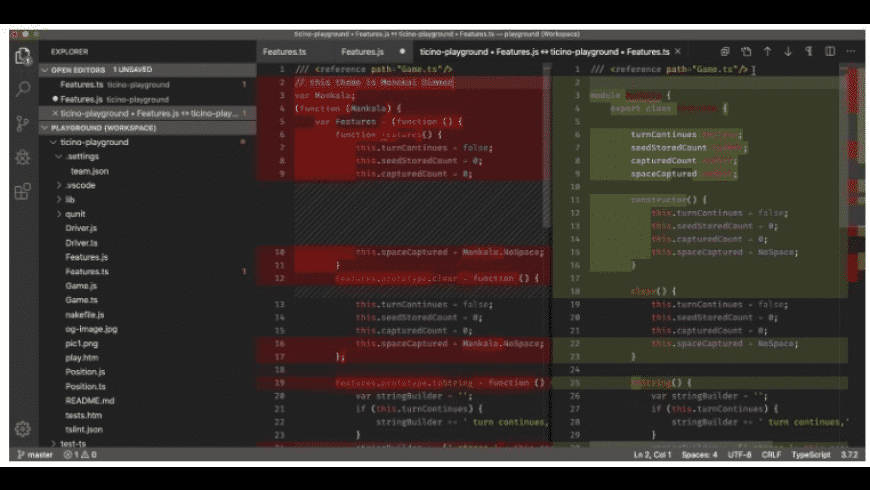
- VISUAL STUDIO OSX SPLIT VIEW INSTALL
- VISUAL STUDIO OSX SPLIT VIEW UPDATE
- VISUAL STUDIO OSX SPLIT VIEW FULL
- VISUAL STUDIO OSX SPLIT VIEW CODE
To add another calendar to the overlay, repeat step 2. That calendar is now in overlay mode with the one you opened first - usually your default calendar.

On the calendar tab, click View in Overlay Mode. Each successive calendar opens next to the one most recently opened. The calendar that you selected opens next to calendar that is already displayed. The calendar that you selected opens next to the calendar that already appears. In Calendar, in the Navigation Pane, select the check box of another calendar that you want to view. In Calendar, in the Navigation Pane, right-click the name of the calendar that you want to view.
VISUAL STUDIO OSX SPLIT VIEW INSTALL
You can install the Universal build, which includes both Intel and Apple Silicon builds, or one of the platform specific builds.You can see multiple calendars at the same time side-by-side or combined into a stacked overlay view to help you see availability across calendars.
VISUAL STUDIO OSX SPLIT VIEW CODE
Yes, VS Code supports macOS ARM64 builds that can run on Macs with the Apple M1 chip. Follow the steps in this issue for resolution.
VISUAL STUDIO OSX SPLIT VIEW UPDATE
If VS Code doesn't update once it restarts, it might be set under quarantine by macOS. It is fine to choose Don't Allow since VS Code does not need access to those folders.

" This is due to the new privacy protections in Mojave discussed above.
VISUAL STUDIO OSX SPLIT VIEW FULL
Out of the box VS Code adds actions to navigate in editor history as well as the full Debug tool bar to control the debugger on your Touch Bar:Īfter upgrading to macOS Mojave version, you may see dialogs saying "Visual Studio Code would like to access your. Note: Since zsh became the default shell in macOS Catalina, run the following commands to add VS Code to your path: cat > ~/.zprofile # Add Visual Studio Code (code) export PATH="\$PATH:/Applications/Visual Studio Code.app/Contents/Resources/app/bin" EOF Touch Bar support Remove the leading slash if you want to run the export command directly in a terminal. Note: The leading slash \ is required to prevent $PATH from expanding during the concatenation. To do so run the following commands: cat > ~/.bash_profile # Add Visual Studio Code (code) export PATH="\$PATH:/Applications/Visual Studio Code.app/Contents/Resources/app/bin" EOF Instead of running the command above, you can manually add VS Code to your path, bash_profile (or equivalent) from an early VS Code version, remove it and replace it by executing the Shell Command: Install 'code' command in PATH command. Note: If you still have the old code alias in your. ' in any folder to start editing files in that folder. Restart the terminal for the new $PATH value to take effect.Open the Command Palette ( Cmd+Shift+P) and type 'shell command' to find the Shell Command: Install 'code' command in PATH command.You can also run VS Code from the terminal by typing 'code' after adding it to the path:




 0 kommentar(er)
0 kommentar(er)
